This paper introduces in detail the relationship and difference between Kenya coffee farm and coffee beans.
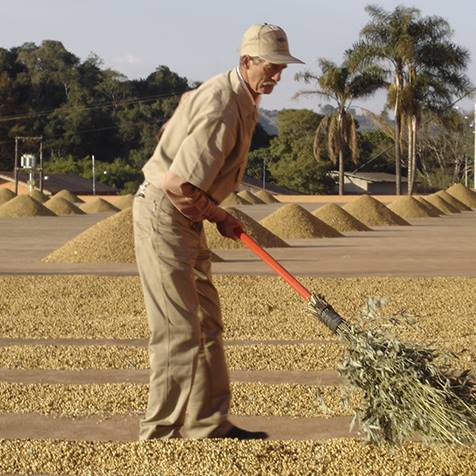
Kenya borders Ethiopia to the north, where the Arabica coffee tree originated, but coffee cultivation did not begin until the early 20th century. Missionaries introduced Arabica trees from Yemen in the 19th century, but did not plant them in large quantities until 1893, when they introduced the ancient Brazilian bourbon coffee seeds. In other words, Kenyan coffee has Brazilian ancestry. Due to differences in water, climate and processing methods, Kenyan beans have a completely different flavor from Brazilian beans.
Coffee tastes different, so you can't drink three or four cups in a row like tea or coke, and the amount of coffee in a formal cup is just right. Ordinary drink coffee to 80-100cc for the right amount, sometimes if you want to drink three or four cups in a row, then you have to dilute the concentration of coffee, or add a lot of milk, but still have to consider the physiological needs of the degree, to increase or decrease the concentration of coffee, that is, do not cause greasy or disgusting feeling, and in the sugar allocation may also wish to change more, make coffee more delicious.
Kenya coffee has a delicate and elegant taste spectrum, bright and varied acidity, excellent sweetness and consistency, and a cleanliness and clarity that is better than that of ordinary producing countries.
Kenyan varieties: SL28, SL34, K7 and Ruirull dominate. SL28, SL34 can drink acid charming plum fruit flavor
Known as the Connoisseurs Cup, Kenyan coffee is renowned in the coffee world for its rich aroma, bright and vibrant acidity, full and elegant alcohol and red wine flavor. Caffeine in different producing areas has its own subtle flavor due to the difference of microclimate.
History of Kenya Coffee
Although it is adjacent to Ethiopia, the birthplace of coffee, coffee cultivation has a relatively recent history. Coffee is believed to have been brought to Kenya by Fathers of the Holy Spirit congregation in the late 19th century, most commonly in 1893, possibly from Reunion Island (Bourbon Island, where bourbon coffee was discovered), or from Ethiopia.
When coffee first arrived, Kenya was under British rule, and coffee cultivation was promoted to earn foreign exchange. With Kenya's independence in 1963, coffee's status did not decline, but was consolidated as an important component of Kenya's trade revenue.
Coffee growing areas of Kenya
Kenya's coffee producing areas are mainly concentrated in Mt. Kenya. Kenya) represents the plateau area. Tropical climate, acidic red volcanic soil for coffee provides a natural suitable growth environment. The main producing areas are Nyeri and Ruiru in the central part.
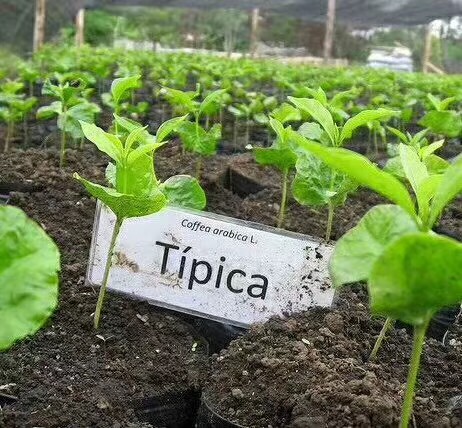
Kenya coffee varieties
Bourbon Bourbon was first brought to Kenya for cultivation. In the 1950s, Scott Laboratory, an agricultural research institution at that time, made unremitting efforts to select two excellent hybrids SL-28 and SL-34, overturning the long-standing bias that artificial breeding varieties were not excellent in natural varieties. SL-28 and SL-34 help Kenya coffee to form its own unique flavor characteristics and establish a perfect reputation in the coffee industry.
As with other coffee-producing governments, SL-28 and SL-34 have withstood the test of time, cultivating loyal fans for generations of Kenyan coffee. The Coffee Research Foundation has begun efforts to promote a new variety, Ruiri 11, and promoters have assured coffee lovers that the new variety still has the classic flavor of Kenyan coffee, but continued efforts have not won the approval of coffee drinkers, who agree that the new variety lacks taste and the future of Ruiru11 remains to be seen.
In addition to the prestigious traditional Arabica coffee, Robusta coffee is also grown in Kenya's western lowlands.
Kenya coffee growing methods
There are mainly two types of large farms (estates) and cooperatives (Cooperatives). The former generally has a larger planting area and independent coffee processing facilities. Most coffee production is done by a large number of small farmers, who form coffee cooperatives. Coffee cooperatives hire managers to oversee their members 'coffee processing, even to the point of managing each coffee tree.
Kenyan coffee is obviously more spicy and unrestrained than shade trees in many high-quality producing areas, and shade trees are not common. In addition, Kenyan coffee is rarely certified, and variety and environmental factors make the use of pesticides somewhat necessary. Organic certification, which is popular in other countries, is rare in Kenya.
Kenya coffee harvest season
Kenya has two harvest seasons, the main one from October to December and the secondary one from May to July.
Kenya Coffee Processing
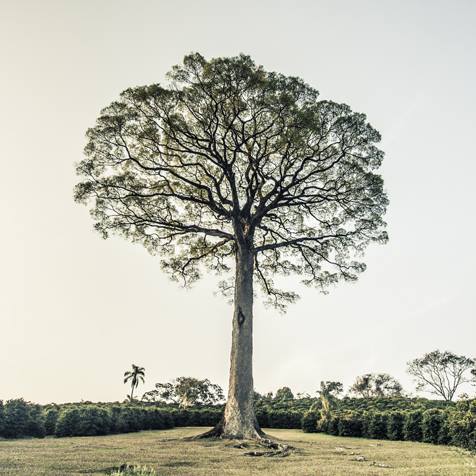
Large farms usually have separate treatment facilities. A large number of small farmers usually pick ripe coffee berries by hand. Coffee picking is labour-intensive, requiring the whole family to work and even workers to be hired during harvest season. Fresh coffee needs to be transported in time to a cooperative-owned coffee processing plant for pulping, which may be carried by ox cart, pickup truck or truck. After dehulling, the Parchment coffee is stored briefly in the cooperative's processing plant and sent to a privately owned plant for dehulling.
Kenya Coffee Auction and Direct Trade
Almost all Kenyan coffee is sold through a coffee exchange located in Nairobi, the capital. Every Tuesday during the harvest season, the Coffee Exchange holds coffee auctions. Traders with trading qualifications will get samples of raw beans in advance. After cup testing, they will choose their favorite raw beans. In the next auction, the highest bidder will get them. Kenya's coffee auction system is considered to be a model for today's popular COE competition, considered to be the most transparent and efficient way of trade, which can effectively encourage growers to pursue quality and achieve high quality and high price results.
Although the coffee auction system has effectively raised the price of high-quality coffee, it is not without disadvantages. First, the existence of many trade middlemen erodes the interests of coffee farmers, and the high price obtained from the auction cannot be fully fed back to the hard-working coffee farmers. Second, it is difficult to trace the production information of the auctioned coffee accurately. For the increasingly prosperous fine coffee market, traceability is an important standard for the evaluation of coffee green beans. Based on these factors, the Kenyan government has begun to relax restrictions on direct coffee trade. State-certified agents can sell coffee beans directly to customers such as specialty coffee roasters abroad. Direct trade can give farmers more incentives to produce high-quality coffee.
Kenya Coffee Grade
Kenya is known for grading coffee beans by particle size. Usually divided into nine grades, according to the bean type, there are PB, that is, round beans, accounting for about 10% of the total yield, in addition to E(elephant beans), AA, AB, C, T, TT, MH, ML according to the size.
Kenya coffee related agencies
KCPTA Kenya Coffee Producers and Traders Association
CRF: Kenya Coffee Research Foundation
KCB Kenya Coffee Board
KCTA Kenya Coffee Traders Association
[Washed Sidama]: Coffee green is slightly gray, some places are coarse and some places are fine, acidity is soft and strong, alcohol is appropriate, sweet and spicy, it is one of the courtyard coffee in the southern highlands of Ethiopia. It differs from African coffee in that Sidamo has a clear acidity, a smooth texture and a delicate floral aroma
Aromatic, rich, fruity, rich and perfect on the palate. Kenya coffee has a wonderful fruity flavor, with a blackberry and grapefruit flavor, and is a favorite of many coffee lovers. This coffee has an excellent medium purity, crispy and refreshing taste
Important Notice :
前街咖啡 FrontStreet Coffee has moved to new addredd:
FrontStreet Coffee Address: 315,Donghua East Road,GuangZhou
Tel:020 38364473
- Prev
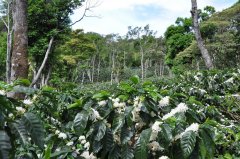
The highest CP value of the year is Rose Summer-2017 Green Standard Collection batch of Jadeite Manor Rose Summer washing out of the box experience!
For the exchange of professional baristas, please follow the coffee workshop (Wechat official account cafe_style) 2017 Green Standard Collection batch of Emerald Manor Rose Summer (washing) Hacienda La Esmeralda, Geisha Washed, 2017 Private Collectio "Legend of the boutique coffee world, and it is now in progress". Before 2003, you know that the best coffee in the world is the national treasure Blue Mountain.
- Next
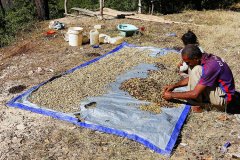
Villa Rica Peru Introduction Villa Rica Coffee House's unique culture and flavor
Coffee growing areas in Peru are mainly located in the central Chanchamayo region, and the two most famous growing areas in this region are Villa Rica and La Merced, with Typica Arabica as the main planting variety. The history of coffee cultivation in Peru can be traced back to 1930, when a group of German immigrants settled in the present Villa Rica region and started coffee planting economic activities.
Related
- Does Rose Summer choose Blue, Green or Red? Detailed explanation of Rose Summer Coffee plots and Classification in Panamanian Jade Manor
- What is the difference between the origin, producing area, processing plant, cooperative and manor of coffee beans?
- How fine does the espresso powder fit? how to grind the espresso?
- Sca coffee roasting degree color card coffee roasting degree 8 roasting color values what do you mean?
- The practice of lattes: how to make lattes at home
- Introduction to Indonesian Fine Coffee beans-- Java Coffee producing area of Indonesian Arabica Coffee
- How much will the flavor of light and medium roasted rose summer be expressed? What baking level is rose summer suitable for?
- Introduction to the characteristics of washing, sun-drying or wet-planing coffee commonly used in Mantenin, Indonesia
- Price characteristics of Arabica Coffee Bean Starbucks introduction to Manning Coffee Bean Taste producing area Variety Manor
- What is the authentic Yega flavor? What are the flavor characteristics of the really excellent Yejasuffi coffee beans?

